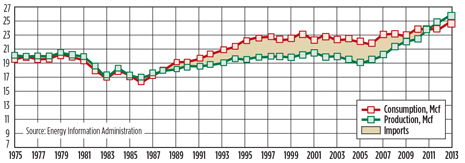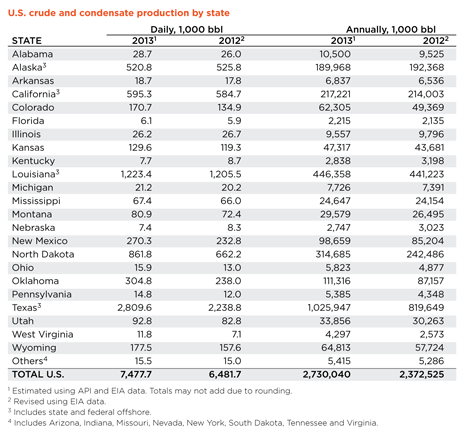February 2014
Special Focus
U.S. oil production surge continues, supported by strong prices
Crude and condensate. Prices that hovered from the low $90s through $110/bbl throughout the year kept the drill bits turning and the oil flowing in 2013.
- The last barrel (February 2024)
- E&P outside the U.S. maintains a disciplined pace (February 2024)
- International drilling and production: Growth outside the U.S. continues at measured pace (February 2023)
- U.S. reserves: U.S. proved reserves experience significant increase (February 2023)
- U.S drilling: U.S drilling activity to climb as supply disruption continues (February 2023)
- Canadian E&P: Canada’s upstream on track to strengthen during 2023 (February 2023)
- Applying ultra-deep LWD resistivity technology successfully in a SAGD operation (May 2019)
- Adoption of wireless intelligent completions advances (May 2019)
- Majors double down as takeaway crunch eases (April 2019)
- What’s new in well logging and formation evaluation (April 2019)
- Qualification of a 20,000-psi subsea BOP: A collaborative approach (February 2019)
- ConocoPhillips’ Greg Leveille sees rapid trajectory of technical advancement continuing (February 2019)




